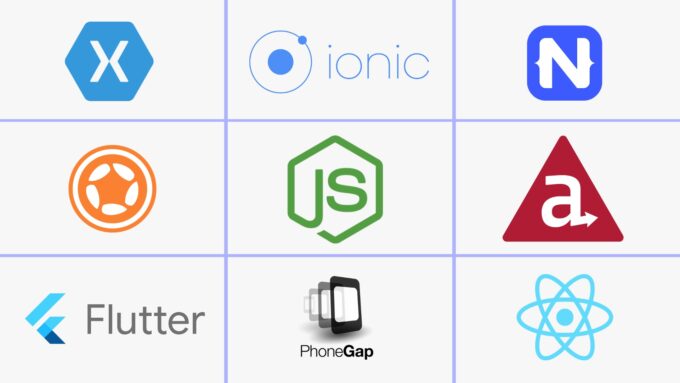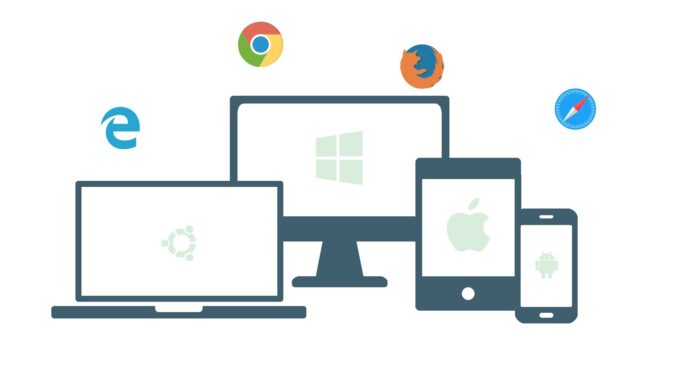In the digital age, the significance of cross-platform development cannot be overstated. Businesses and developers are constantly seeking efficient ways to reach wider audiences across various devices. This blog post is designed to demystify the process, offering beginners a solid foundation in cross-platform development.
We’ll navigate through 10 actionable tips, ensuring you’re well-equipped to embark on this rewarding journey. Whether you’re a novice programmer or transitioning from single-platform projects, these insights will enhance your skill set and prepare you for the challenges and opportunities of cross-platform development.
Understanding Cross-Platform Development
Cross-platform development refers to the creation of software applications that are compatible with multiple operating systems. The allure of this approach lies in its cost-effectiveness, code reusability, and the ability to reach broader audiences.
For beginners, diving into cross-platform development opens doors to versatile projects and a diverse skill set. It’s a strategic starting point that aligns with the industry’s trend towards inclusivity and accessibility, ensuring your applications resonate with users across different platforms and devices.
1. Choose the Right Cross-Platform Framework

The foundation of successful cross-platform development lies in selecting the appropriate framework. Popular options like React Native, Flutter, and Xamarin offer unique features and community support. When choosing, consider factors such as the framework’s performance, compatibility with desired platforms, and the learning resources available.
Align your choice with your project’s specific needs and your personal or team’s proficiency in the framework’s underlying languages. A thoughtful selection will streamline your development process and set the stage for a robust, versatile application. If you want to do it on Flutter you ought to work with one company which is seen as a Flutter app development company of top quality.
2. Plan Your Project
Effective project planning is pivotal. It sets the trajectory for your development process, ensuring efficiency and clarity. Begin by delineating your application’s core functionalities and user journey. Establish clear, attainable goals and milestones, and construct a realistic timeline. This roadmap will serve as your guide, helping you manage resources, anticipate challenges, and track progress. Remember, a well-planned project is your first step towards a successful application.
3. Master the Basics of Programming Languages
Cross-platform development often requires proficiency in specific programming languages. For instance, React Native is based on JavaScript, while Flutter uses Dart. Investing time in mastering these languages lays a solid foundation for your development journey. Utilize online courses, documentation, and community forums to bolster your learning. A strong grasp of the relevant programming languages not only aids in writing efficient code but also in troubleshooting and understanding the nuances of your chosen framework.
4. Design for Cross-Platform Compatibility

Designing for cross-platform compatibility is crucial. It involves creating user interfaces that are both responsive and adaptive across different devices and screen sizes. Prioritize a seamless user experience by ensuring your design is intuitive and maintains consistency across platforms. Leverage the tools and guidelines provided by your chosen framework to implement a flexible layout that resonates with users, regardless of their device.
5. Utilize Cross-Platform Libraries and Plugins
Cross-platform libraries and plugins are invaluable in simplifying the development process. They provide pre-built functionalities that save time and effort. Familiarize yourself with popular libraries that are compatible with your chosen framework. Whether it’s handling network requests, integrating payment systems, or managing local databases, these resources can significantly expedite your development timeline and enhance your application’s capabilities.
6. Test Thoroughly on Multiple Devices
Thorough testing is non-negotiable. It’s essential to ensure your application performs consistently across various devices and screen sizes. Establish a rigorous testing regimen that encompasses a wide range of devices. Utilize emulators for preliminary testing and real devices for more accurate results. This approach helps identify and rectify platform-specific issues, ensuring a polished, user-friendly application.
7. Optimize Performance

Optimizing your application’s performance is paramount. Users expect fast, responsive applications, and even minor delays can lead to dissatisfaction. Focus on optimizing load times, enhancing responsiveness, and reducing battery consumption. Profiling tools provided by your framework can help identify performance bottlenecks.
Remember, a well-optimized application not only delights users but also stands out in the competitive app market. Effective performance optimization also involves minimizing memory usage and carefully managing resources, especially in applications that handle large amounts of data or require significant processing power.
8. Stay Updated with Platform Changes
The tech landscape is constantly evolving, with frequent updates to operating systems and frameworks. Staying abreast of these changes is crucial. Regularly update your knowledge base and adapt your development practices accordingly. This proactive approach ensures your application remains compatible, secure, and in line with the latest technological advancements.
Additionally, understanding the implications of platform updates on your app’s functionality and user experience is vital. Regularly reviewing and testing your application against these updates can prevent potential issues and ensure a seamless user experience.
9. Collaborate and Seek Help
Collaboration and community engagement can significantly enrich your development journey. Don’t hesitate to seek guidance from experienced developers or contribute to forums and discussions. Platforms like Stack Overflow, GitHub, and specific framework communities are treasure troves of knowledge, offering insights, solutions, and networking opportunities.
Embrace collaboration as a tool for learning, problem-solving, and innovation. Building a network of peers and mentors can provide support, inspire new ideas, and offer different perspectives that enhance your development skills and the quality of your projects.
10. Refine and Iterate

Development is an iterative process. Collect and incorporate user feedback to refine your application continually. This feedback loop is invaluable in enhancing functionality, design, and overall user satisfaction. Embrace the iterative nature of development, using each cycle as an opportunity to learn, adapt, and evolve.
Additionally, tracking user interactions and analyzing usage patterns can provide deep insights, helping you understand user behavior better and tailor your application to meet their needs more effectively. This approach not only improves your application but also fosters a loyal user base.
Conclusion
Cross-platform development is a journey of continuous learning and adaptation. The tips outlined offer a roadmap for beginners, laying the groundwork for successful, versatile applications. Embrace the challenges and opportunities this path presents. With dedication, curiosity, and a strategic approach, you’re well-equipped to create impactful, cross-platform applications. Start your journey with confidence, and watch as your skills and projects flourish in this dynamic, rewarding field.










